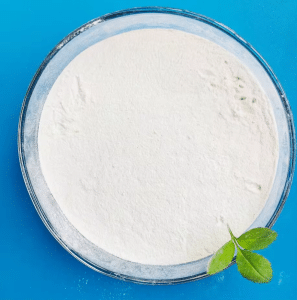In the realm of biochemistry, few molecules exhibit the versatility and importance of glycine. As one of the simplest amino acids, glycine plays a fundamental role in biological systems, influencing everything from protein synthesis to neurotransmitter function. This article delves into the multifaceted nature of glycine, exploring its biochemical properties, physiological roles, and potential therapeutic applications.
Biochemical Foundations
Chemically represented as NH₂CH₂COOH, glycine is the most minor and essential amino acid. Its structure consists of a hydrogen atom as its side chain, making it unique among amino acids. This simplicity contributes to its wide distribution and diverse functions within living organisms.
Synthesis and Occurrence
Glycine can be synthesized through various biochemical pathways. It is synthesized primarily from serine via the enzyme serine hydroxymethyltransferase in humans and other animals. Alternatively, glycine can be obtained from the diet, particularly from protein-rich sources such as meat, fish, dairy, and legumes.
In addition to its synthesis in animals, glycine is a crucial component in the biosynthesis of other biochemical compounds. It serves as a precursor for creatine, heme, purines, and glutathione, highlighting its pivotal role in cellular metabolism and homeostasis.
Physiological Roles
Structural Component of Proteins
While glycine is not complex, it is a vital building block for proteins. Due to its small size and flexibility, glycine often appears in structural proteins requiring tight packing and flexibility. Collagen, the most abundant protein in mammals, contains significant amounts of glycine, contributing to the structural integrity of connective tissues like skin, ligaments, and bones.
Neurotransmitter Function
In the nervous system, glycine acts as an inhibitory neurotransmitter, primarily in the spinal cord and brainstem. It binds to glycine receptors and chloride ion channels that help regulate neuronal excitability. Glycine receptors are involved in motor control, pain perception, and other physiological processes, underscoring the neurotransmitter’s importance in the central nervous system.
Regulation of Metabolism
Beyond its role in protein synthesis, glycine participates in various metabolic pathways crucial for energy production and detoxification. It is involved in synthesizing bile salts, which aid in fat digestion and absorption. Moreover, glycine is vital in synthesizing glutathione, a powerful antioxidant that protects cells from oxidative stress and maintains cellular health.
Therapeutic Applications
Given its diverse roles in cellular function and metabolism, glycine has garnered attention for its potential therapeutic benefits across several medical conditions.
Sleep and Mental Health
Research suggests glycine may have a calming effect on the brain, promoting relaxation and improved sleep quality. Studies have explored its use as a dietary supplement for individuals with insomnia, demonstrating potential benefits in reducing sleep latency and improving sleep efficiency.
Furthermore, glycine supplementation has shown promise in managing symptoms of anxiety and schizophrenia. Its role as a neurotransmitter modulator and its ability to influence NMDA receptors in the brain may contribute to its anxiolytic effects. However, further clinical studies are needed to validate these findings conclusively.
Muscle and Joint Health
Due to its presence in collagen, glycine is essential for maintaining healthy connective tissues and promoting joint function. Some studies suggest that glycine supplementation may aid in reducing joint pain and inflammation associated with conditions like osteoarthritis. The collagen-derived peptides containing glycine have been marketed as supplements for joint health, although their efficacy varies and requires further investigation.
Metabolic Disorders
In metabolic disorders such as non-alcoholic fatty liver disease (NAFLD) and metabolic syndrome, glycine supplementation has shown potential benefits. Glycine helps regulate lipid metabolism and may prevent fat accumulation in the liver, thereby mitigating the progression of NAFLD. Additionally, glycine’s role in glucose homeostasis suggests it may have a role in managing insulin sensitivity and reducing the risk of type 2 diabetes.
Conclusion
Glycine, often overlooked for its simplicity, emerges as a critical player in numerous biochemical processes essential for life. From protein synthesis to neurotransmission and beyond, its multifaceted roles underscore its significance in maintaining cellular function and overall health. Ongoing research unveils new aspects of glycine’s biochemistry and potential therapeutic applications, promising further insights into its diverse physiological functions.
As our understanding deepens, glycine may offer novel therapeutic avenues for treating various medical conditions, potentially enhancing quality of life and longevity. Whether as a structural component of collagen or as a modulator of neurotransmitter activity, glycine exemplifies how simplicity in structure belies complexity in function within the intricate tapestry of biological systems.




